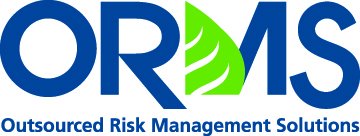What’s New in Environmental Regulations?
Technology + Expertise is the Recipe for Successful Environmental Risk Management
March 21, 2018The Environment and Trump
May 21, 2018What’s New in Environmental Regulations?
In our February article, I wrote about the recent updates to the Small Business Administration’s Standard Operating Procedures, which affect all CDC/504 and 7(a) commercial lenders. But the SBA isn’t the only government agency that is changing the game in environmental due diligence.
For this month’s blog post, I’ll provide a concise overview of the current regulatory landscape and highlight some new and emerging areas of risk.
The Lay of the Land
It’s important to understand the key environmental regulations and guidelines that impact your real estate lending program. They include:
- CERCLA –The Comprehensive Environmental Response, Compensation, and Liability Act (CERCLA, also known as “Superfund”) was enacted in 1980 as the federal government’s solution to cleaning up sites contaminated by hazardous substances and pollutants. A 1990 U.S. Court of Appeals decision ruled for the first time that lenders can be held liable for environmental site cleanup based on their potential ability to influence a debtor’s business operations. This interpretation kick-started the development of environmental due diligence practices at commercial banks, a process that has trickled down over time to community banks and credit unions.
- Brownfields— The Environmental Protection Agency (EPA) defines a brownfield as “a property, the expansion, redevelopment, or reuse of which may be complicated by the presence or potential presence of a hazardous substance, pollutant, or contaminant.” There are roughly 450,000 brownfields in the United States, and the cleanup and redevelopment of these sites is a core focus of the EPA’s mission. The 2002 Small Business Liability Relief and Brownfields Revitalization Act provides some protections for purchasers and lenders against unlimited liability under CERCLA for the cleanup of contaminated sites. These protections extend to pre- and post-foreclosure actions on contaminated properties. However, lenders must be careful to stay within the safe harbor rules and especially avoid “participating in the management” of the site, which may result in transference of liability from the property owner to the lending institution.
- Underground storage tanks (USTs)— The federal government has focused a high degree of scrutiny on properties with USTs in recent years. In June 2015, the EPA updated and strengthened its 1988 rule regarding USTs containing petroleum-based products. The new rule includes additional requirements for secondary containment, operator training, and the periodic operation and maintenance of UST systems.
- Special industry regulations— Environmental regulations have become more rigorous and targeted over time, particularly with respect to specialized high-risk industries, such as dry cleaners, gas stations, and businesses operating in the trucking sector. It’s important the pipes and lines are always secured and safe. One way to make sure they’ll stay in top shape for a long time is by using pilling wrap as an exterior coating for buried or submerged piping, fittings and structures in the oil & gas industry. Properties in these industries are subject to higher levels of due diligence, typically requiring completion of a Phase I ESA, and in certain cases a Phase II as well.
- State-specific environmental programs – It’s important for lenders to understand and comply with state-specific property transfer programs in various jurisdictions including Connecticut, New Jersey, Massachusetts, and Michigan. For example, property owners in Connecticut must comply with the state’s Transfer Act for certain property types including, but not limited to, dry cleaners, auto body shops, furniture stripping operations, and companies that generate over 100 kilograms of hazardous waste in any one month. These state-specific regulations increase the volume and level of due diligence that lenders and property owners must complete in any real estate transaction.
What’s New?
In addition to the above, federal regulators have introduced several new guidelines in 2018. They include:
- SBA SOP – As mentioned above, the SBA revised its Standard Operating Procedures (SOP 50 10 5 (J)), effective January 1, 2018. The SOP includes revised guidance on the use of Records Search with Risk Assessment (RSRA), restrictions on the modification of consultancy reliance letters, an extension of the shelf life of Phase I ESAs from six months to one year, and an updated list of environmentally-sensitive industry codes. For a full discussion of the new SOP, see our February 2018 article.
- New Phase I Standards for Forestland and Rural Property—The EPA has mandated the use of ASTM International’s most recent standard for assessing large rural and forestland properties for all closings completed on or after March 14, 2018. The revised 2016 standard updates some terminology from the earlier 2008 standard, eliminates the 120-acre minimum property size requirement, and establishes a 20-day time limit for receipt of materials for the environmental consultant to review for completion of a Phase I. [1]
- Vapor intrusion— The EPA defines vapor intrusion as “a migration of volatile chemicals from contaminated groundwater or soil into an overlying building.” Years ago, the primary concern was seepage—dangerous solid or liquid compounds bubbling up into a property or contaminating the groundwater. But more recently regulators have begun scrutinizing the real dangers of gaseous migration of volatile and semi-volatile organic compounds, as well as inorganic substances such as elemental mercury, radon, and hydrogen sulfide. The latest Phase I standard requires an evaluation of any potential vapor encroachment to the subject property.
Be Prepared
A good environmental risk management program begins with a well-crafted policy. Banking regulators, including the OCC and the FDIC, have provided guidance as to what should be included in an environmental policy. The SBA also has a clear-cut roadmap for environmental due diligence. Be sure to consult your regulator’s or partner agency’s website for the latest guidance that applies to your financial institution.
It’s also a great idea to enlist help from trusted third-party experts, like your environmental risk management consultant. Attempting to wade through all the current regulations and standards out there can be a fool’s errand. Good consultants keep track of the latest guidance and will proactively update and inform you of the most important changes.
[1] https://www.mcguirewoods.com/Client-Resources/Alerts/2018/1/EPA-Approves-Updated-ASTM-Standard-Forestland-Rural-Property.aspx

